 |
 |
 |
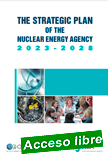 |
The Strategic Plan of the Nuclear Energy Agency 2023-2028
Nuclear Energy Agency, OECD, 2022. 54 p.
The OECD Nuclear Energy Agency (NEA) Strategic Plan serves as a guiding instrument that reflects the priorities of its member countries as the Agency addresses evolving needs in the exploration and application of nuclear science and technology. This Strategic Plan document includes a description of the context in which the Plan is written, with consideration to global changes in policies, requirements, priorities and technologies. The document sets out the NEA mission and vision, general strategy, and strategic goals.
|
The Plan then highlights the governance of the Agency and explains its interactions within the OECD family and with external organisations and groups, including academia, civil society, non-member countries, and the nuclear industry.
|
 |
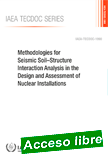 |
Methodologies for Seismic Soil–Structure Interaction Analysis in the Design and Assessment of Nuclear Installations
IAEA-TECDOC-1990 ¦ 194 pages ¦ Date published: 2022
The response of a nuclear installation’s structure during an earthquake depends on the characteristics of the ground motion, the surrounding soil and the structure itself. Soil– structure interaction (SSI) analysis is used to evaluate the effects of seismic ground motion on an installation’s structure, system and components, to ensure it is designed to withstand the effects of earthquakes, without loss of safety functions.
|
This publication presents SSI phenomena and current practices in SSI modelling, simulation methodology and analysis methods for the design and assessment of nuclear installations. It complements IAEA Safety Standards Series No. SSG-67, Seismic Design for Nuclear Installations, and No. NS-G-2.13, Evaluation of Seismic Safety for Existing Nuclear Installations.
|
 |
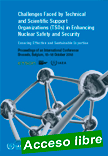 |
Challenges Faced by Technical and Scientific Support Organizations (TSOs) in Enhancing Nuclear Safety and Security
Proceedings Series - International Atomic Energy Agency ¦ English STI/PUB/1955 ¦ 258 pages ¦ Date published: 2021
This publication is the proceedings of an international conference which focused on evaluating actions that were undertaken to address recommendations from three previous technical and scientific support organizations (TSO) conferences and on the achievements of the TSO Forum.
|
The conference highlighted the importance of scientific and technical capabilities to support regulatory decision making for enhanced nuclear and radiation safety and security, and explored solutions for the development, maintenance, and enhancement of such capacities, especially in countries newly embarking on nuclear power programmes. In particular, the conference promoted the self assessment methodology developed by the IAEA to support Member States in developing their technical and scientific capabilities. The supplementary files, available on-line, contain the contributed papers and respective posters.
|
 |
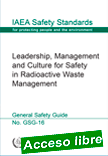 |
Leadership, Management and Culture for Safety in Radioactive Waste Management
STI/PUB/1979 ¦ 99 pages ¦ Date published: 2022
This Safety Guide provides recommendations on how to comply with IAEA safety requirements on leadership and management for safety in the area of radioactive waste management. It presents updated guidance on developing and implementing management systems for safety during all steps of radioactive waste management. Emphasis is placed upon effective leadership and culture for safety.
|
The publication is intended to be used by the regulatory body and organizations with responsibilities for directing, planning, or undertaking the management of radioactive waste; it is also intended to be used by the suppliers to such organizations of safety related services and products that support radioactive waste management.
|
 |
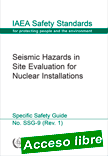 |
Seismic Hazards in Site Evaluation for Nuclear Installations
STI/PUB/1950 ¦ 77 pages ¦ Date published: 2022
This Safety Guide supersedes the 2010 edition of IAEA Safety Standards Series No. SSG-9. It takes account of recently gained knowledge and practices developed by Member States related to seismic hazards, especially lessons from the Fukushima Daiichi accident. It also addresses concomitant events associated with earthquakes, such as tsunamis. The revision provides a clearer separation between the process for assessing the seismic hazards at a specific nuclear installation site and the process for defining the related basis for design and safety assessment of the nuclear installation.
|
Thus, it bridges gaps and avoids undue overlap of the two processes, which correspond to and are performed at different stages of siting of the nuclear installation.
|
 |
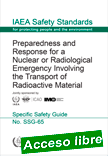 |
Preparedness and Response for a Nuclear or Radiological Emergency Involving the Transport of Radioactive Material
STI/PUB/1960 ¦ 91 pages ¦ Date published: 2022
This publication provides guidance and recommendations on arrangements to be made at the preparedness stage, as part of overall emergency preparedness, for emergencies involving the transport of radioactive material. The guidance and recommendations in this Safety Guide are aimed at any State and its government, and at regulatory bodies and other response organizations, including consignors, carriers and consignees.
|
It supports the implementation of the requirements established in IAEA Safety Standards Series No. GSR Part 7 for such emergencies, irrespective of their cause, and the IAEA Transport Regulations, IAEA Safety Standards Series No. SSR-6 (Rev. 1).
|
 |
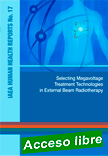 |
Selecting Megavoltage Treatment Technologies in External Beam Radiotherapy
STI/PUB/1948 ¦ 43 pages ¦ Date published: 2022
Radiotherapy can be delivered with different types of machine, such as external beam high energy radiation machines, kilovoltage machines and brachytherapy equipment. Variation in the incidence of different cancer types, the complexity and cost of treatment technologies, and differences in local social, economic and physical circumstances are all factors that influence technology acquisition, purchase and implementation.
|
This publication addresses one of the many factors, associated with the planning of a new radiotherapy facility or the upgrade of an existing one – the selection of a high energy (megavoltage) radiotherapy machine. The two main high energy machine types are medical linear accelerators (linacs) and cobalt-60 machines. Although both treatment modalities have been compared extensively in the relevant literature, very few publications describe all the issues to consider when choosing a megavoltage machine. This publication puts all appropriate questions into context and provides information for non-technical administrators and decision makers, and for professionals directly involved in treating patients.
|
 |
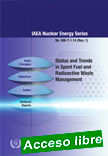 |
Status and Trends in Spent Fuel and Radioactive Waste Management
IAEA Nuclear Energy Series NW-T-1.14 (Rev. 1) ¦ English ¦ STI/PUB/1963 ¦ 88 pages ¦ Date published: 2022
This publication provides a global overview of the status of spent fuel and radioactive waste management programmes, inventories, current practices, technologies and trends. It presents information on national arrangements for the management of spent fuel and radioactive waste, and on current waste and spent fuel inventories and their future estimates. Achievements, challenges and trends in the management of spent fuel and radioactive waste are also addressed.
|
This second edition has been developed with a basis of national profiles submitted by Member States, complemented with openly available Joint Convention National Reports. The data reported are fully dependent on the input from the States and by the assumptions made to transform these data into the waste classes defined in IAEA Safety Standards Series No. GSG-1, Classification of Radioactive Waste.
|
 |
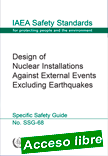 |
Design of Nuclear Installations Against External Events Excluding Earthquakes
IAEA Safety Standards Series No. SSG-68 ¦ STI/PUB/1968 ¦ 91 pages ¦ Date published: 2021
The objective of this Safety Guide is to provide recommendations on the design of nuclear installations for protection against the effects of external events excluding earthquakes. In particular, this Safety Guide is intended to provide recommendations on engineering related matters in order to meet the applicable safety requirements established in SSR-2/1 (Rev. 1), SSR-3 and SSR-4 for the protection of nuclear installations against such events.
|
This Safety Guide also provides methods and procedures for defining an appropriate design for a nuclear installation on the basis of the site hazard evaluation and the layout of the installation. The aim is to provide guidance for the design of the installation, in particular for the protection of SSCs important to safety against design basis external events to ensure the safety of the installation. This Safety Guide also provides recommendations on the selection of beyond design basis external events in order to check and verify margins and avoid cliff edge effects5. This Safety Guide is intended for use by organizations involved in the design of nuclear installations against external events; in analysis, verification and review; and in the provision of technical support. It is also intended for use by regulatory bodies for the establishment of regulatory guides.
|
 |
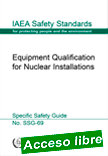 |
Equipment Qualification for Nuclear Installations
IAEA Safety Standards Series No. SSG-69 ¦ STI/PUB/1978 ¦ 53 pages ¦ Date published: 2021
The objective of this Safety Guide is to provide recommendations on a structured approach to the establishment and preservation of equipment qualification in nuclear installations to meet the relevant requirements established in SSR-2/1 (Rev. 1) [1], SSR-2/2 (Rev. 1) [2], SSR-3 [3] and SSR-4 [4]. This Safety Guide is intended for use by organizations responsible for aspects of equipment qualification for nuclear installations.
|
This Safety Guide is also intended for use by regulatory bodies to support their licensing and inspection activities relating to equipment qualification.
|
 |
| |
|
|

|
|
|
| |
|
|
| |
| |
|
|
| |
| |
|
|
| |
| |
|
|
|
| |
| |

